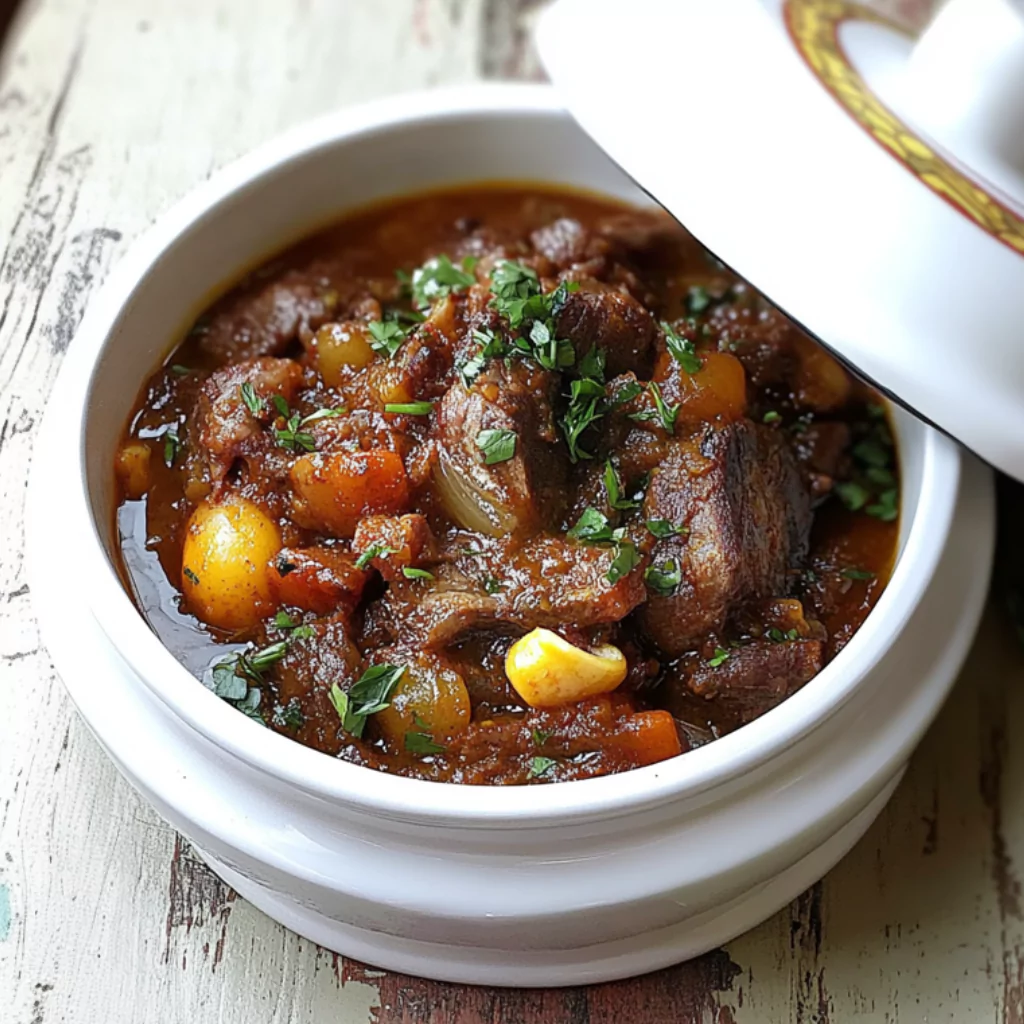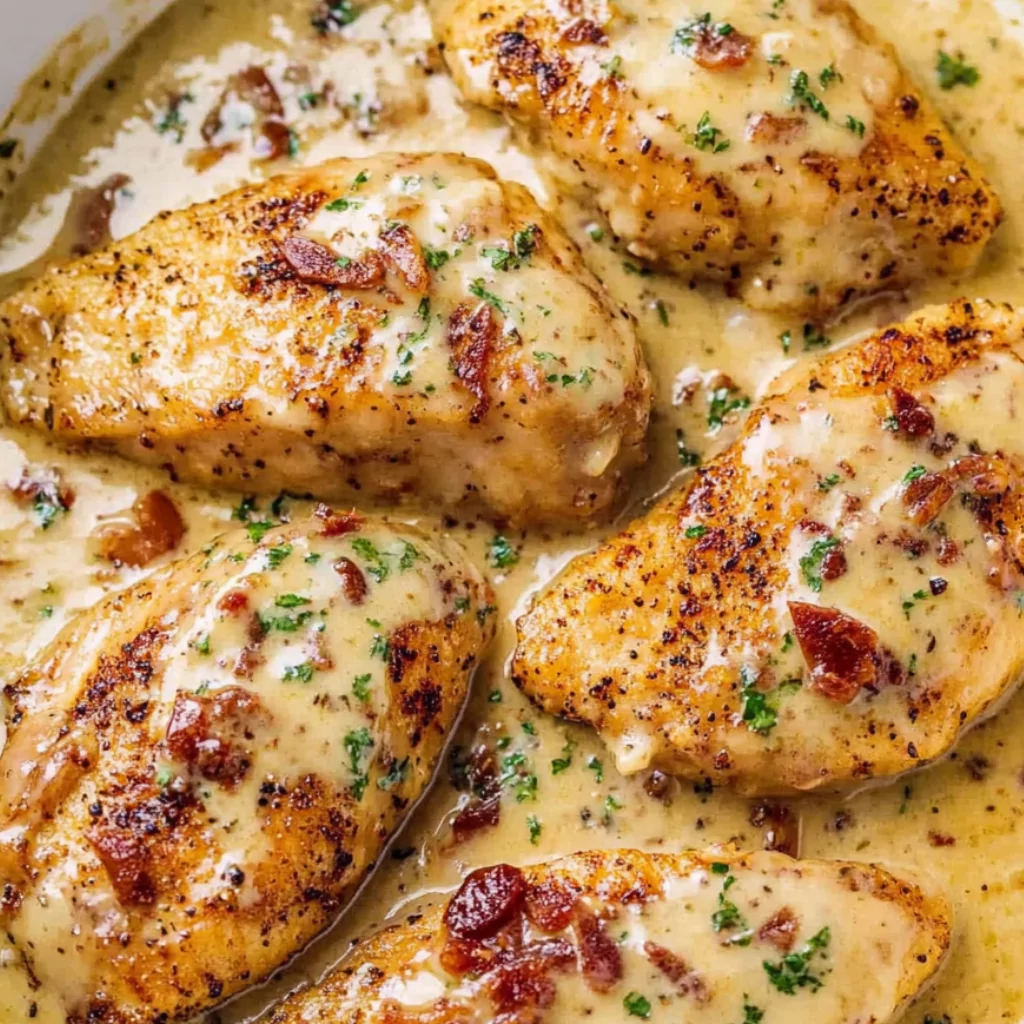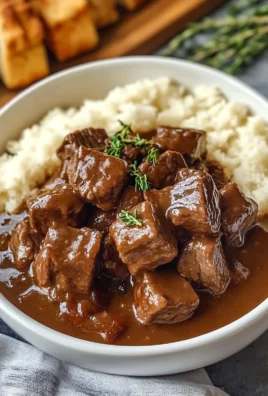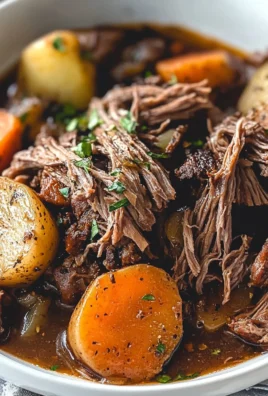Moroccan Lamb Tagine is much more than just a dish; it is a culinary experience that embodies the vibrant flavors and rich history of Moroccan cuisine. Known for its tender lamb, fragrant spices, and harmonious balance of sweet and savory ingredients, this dish is a centerpiece of Moroccan culture and cuisine. It is traditionally cooked in a tagine—a unique, conical clay pot that enhances the depth of flavor through slow cooking.

The essence of Moroccan Lamb Tagine lies in its combination of flavors: the earthiness of cumin, the sweetness of dried apricots, the tang of preserved lemons, and the warmth of cinnamon. These elements, simmered together with succulent lamb, create a dish that is deeply satisfying and layered with complexity.
This dish is more than a meal; it’s a reflection of Moroccan hospitality and family traditions. Whether served during Ramadan, festive celebrations, or everyday family dinners, Lamb Tagine brings people together and transports them to the bustling souks and sun-soaked landscapes of Morocco.
The History and Cultural Significance of Moroccan Lamb Tagine
Origins of the Tagine
The tagine, both a dish and a cooking vessel, has roots in North African cuisine, particularly in Morocco. The word “tagine” originates from the Berber word “tajin,” meaning a large pot. The tagine pot itself is a marvel of functional design, with its conical lid allowing steam to circulate during cooking, keeping the meat moist and tender.
Historically, tagines were used by nomadic tribes who relied on slow-cooking methods to tenderize tougher cuts of meat and create hearty meals with minimal resources. Over time, this method evolved, incorporating the flavors and influences of Arabic, Berber, and even French cuisines.
Cultural Role of Lamb Tagine
In Moroccan culture, lamb tagine holds a special place at the dining table. It is often the centerpiece of celebrations, including weddings, Eid feasts, and family gatherings. Lamb, a prized ingredient in Moroccan cuisine, symbolizes generosity and abundance. Pairing it with a medley of spices, dried fruits, and preserved lemons elevates the dish to a festive delight.
The preparation of lamb tagine is an art form passed down through generations. It is more than just cooking; it’s a ritual of love, care, and attention to detail. Families often gather to prepare and enjoy tagine together, making it a communal experience.
Preparation Phase & Tools to Use
Prep Time, Cook Time, Cool Time, Servings, Yield
- Prep Time: 30 minutes
- Cook Time: 2 hours
- Cool Time: 10 minutes
- Servings: 4-6
- Yield: One traditional Moroccan lamb tagine
Essential Tools and Equipment
- Tagine Pot: The traditional cooking vessel for authentic tagine recipes. Options include clay, ceramic, or cast iron.
- Dutch Oven or Slow Cooker: Suitable alternatives for those without a tagine pot.
- Mortar and Pestle: For grinding fresh spices to release their aroma and flavor.
- Cutting Board and Chef’s Knife: For preparing vegetables and herbs.
- Measuring Spoons and Cups: For precise measurements of spices and other ingredients.
- Wooden Spoon or Ladle: For stirring without scratching the tagine’s surface.
Importance of Each Tool
Tagine Pot
The tagine pot is central to this dish. Its conical lid traps steam and circulates it back into the dish, ensuring the lamb remains tender and juicy. The slow-cooking process also allows the flavors to meld together beautifully.
Mortar and Pestle
Using a mortar and pestle to grind spices ensures they release their natural oils, enhancing the dish’s aroma and depth of flavor. Pre-ground spices can work in a pinch, but freshly ground spices make a noticeable difference.
Dutch Oven or Slow Cooker
For those who don’t own a tagine pot, a Dutch oven or slow cooker can replicate the slow-cooking process effectively. However, these tools lack the unique design of the tagine, which helps concentrate the dish’s flavors.
Preparation Tips for the Perfect Lamb Tagine
- Choose Quality Ingredients: Opt for fresh lamb, preferably cuts like shoulder, shank, or leg, which are ideal for slow cooking.
- Marinate for Maximum Flavor: Marinate the lamb in a spice blend for at least two hours, or overnight if possible. This step infuses the meat with Moroccan flavors.
- Balance Sweet and Savory: Achieving the perfect balance between sweetness (from dried fruits) and savory spices is key. Avoid overpowering one flavor over the other.
- Layer Ingredients Carefully: When assembling the tagine, layer the lamb at the bottom, followed by vegetables and dried fruits. This allows the meat to cook in its juices and absorb the flavors above it.
- Monitor the Heat: Cook the tagine on low heat to prevent the ingredients from drying out or burning.
Ingredients List
- Protein: 2 lbs lamb shoulder or shank
- Vegetables:
- 2 medium onions, finely chopped
- 3 medium carrots, peeled and sliced
- 1 cup cherry tomatoes
- Spices:
- 1 tsp ground cinnamon
- 1 tsp turmeric powder
- 1 tsp sweet paprika
- ½ tsp saffron threads, soaked in warm water
- 1 tbsp ground cumin
- Herbs:
- 2 tbsp fresh cilantro, chopped
- 2 tbsp fresh parsley, chopped
- Fruits:
- 1 cup dried apricots
- ¼ cup golden raisins
- Other Ingredients:
- 2 tbsp olive oil
- 2 cups chicken or beef broth
- 1 preserved lemon, quartered
- 1 tbsp honey
Step-by-Step Cooking Instructions
1. Marinating the Lamb
- In a large bowl, combine cinnamon, turmeric, paprika, cumin, and olive oil to create a spice paste.
- Coat the lamb pieces thoroughly with the paste. Cover and refrigerate for at least 2 hours or overnight.
2. Preparing the Tagine Base
- Heat olive oil in the tagine pot (or a Dutch oven) over medium heat.
- Sauté the chopped onions until golden and translucent. Add minced garlic and stir for 1-2 minutes.
3. Layering the Ingredients
- Place the marinated lamb at the bottom of the tagine pot.
- Add sliced carrots, cherry tomatoes, and dried fruits on top of the lamb.
- Arrange preserved lemon quarters evenly over the dish.
4. Adding the Liquid
- Pour in the chicken or beef broth, ensuring the liquid covers about ¾ of the ingredients.
- Drizzle honey over the top for a touch of sweetness.
5. Cooking the Tagine
- Cover the tagine and reduce the heat to low. Let it simmer gently for 2 hours.
- Check occasionally to ensure there’s enough liquid; add more broth if necessary.
6. Garnishing and Serving
- Once the lamb is tender and falling off the bone, sprinkle fresh cilantro and parsley over the dish.
- Serve hot with Moroccan bread, couscous, or rice.
Side Dish Recommendations
Pairing Moroccan Lamb Tagine with the right side dishes can elevate the meal to a full culinary experience. Below are eight perfect side dishes to complement the rich, hearty flavors of the tagine.
1. Couscous with Almonds and Raisins
Couscous is a staple in Moroccan cuisine and pairs beautifully with lamb tagine. Prepare fluffy couscous and toss it with slivered almonds and golden raisins for added texture and a hint of sweetness. The couscous soaks up the tagine’s flavorful sauce, creating a harmonious blend of tastes.
2. Moroccan Flatbread (Khobz)
Moroccan flatbread, known as khobz, is essential for scooping up the sauce and tender lamb pieces. This dense yet soft bread is perfect for soaking up the rich juices of the tagine, making it an indispensable accompaniment.
3. Roasted Vegetables with Harissa Glaze
Roasted vegetables, such as zucchini, eggplant, and bell peppers, glazed with a spicy harissa sauce, add a smoky and slightly spicy dimension to the meal. The vegetables provide a lighter, healthier contrast to the robust flavors of the lamb.
4. Minted Yogurt Dip
A cool, creamy minted yogurt dip offers a refreshing counterpoint to the warm spices in the tagine. This simple side dish is made by combining plain yogurt with chopped mint leaves, a squeeze of lemon, and a pinch of salt.
5. Zaalouk (Eggplant and Tomato Dip)
Zaalouk is a traditional Moroccan side dish made with roasted eggplants, tomatoes, garlic, and spices. It has a rich, smoky flavor and a velvety texture that complements the lamb tagine perfectly. Serve it as a dip with flatbread or as a side dish.
6. Stuffed Dates with Goat Cheese
Stuffed dates are a popular Moroccan appetizer or snack. Sweet, soft Medjool dates are filled with creamy goat cheese and topped with crushed pistachios for a combination of sweet, tangy, and nutty flavors. These make for an elegant starter or a light side dish.
7. Pickled Lemons and Olives
Pickled lemons and olives are classic Moroccan condiments that can be served alongside the tagine. The tangy, salty flavors cut through the richness of the lamb, offering a bright, zesty contrast.
8. Spiced Moroccan Carrot Salad
A simple carrot salad made with shredded carrots, a drizzle of olive oil, a splash of orange juice, and a sprinkle of cinnamon and cumin can add a refreshing crunch to the meal. Garnish with chopped parsley or mint for added freshness.
Nutritional Information & Health Benefits
Moroccan Lamb Tagine is not just a feast for the senses but also a dish packed with essential nutrients. Below is an overview of its nutritional value and health benefits.
Nutritional Breakdown (Per Serving)
- Calories: Lamb tagine is calorie-dense, providing energy for a hearty meal. A typical serving contains approximately 400-500 calories, depending on portion size.
- Protein: The lamb is a rich source of high-quality protein, essential for muscle growth and repair.
- Healthy Fats: The dish contains heart-healthy fats from olive oil, balanced by the natural fats in lamb.
- Carbohydrates: The dried fruits (apricots, raisins) and optional sides like couscous add complex carbohydrates for sustained energy.
- Vitamins and Minerals:
- Iron: Lamb is a fantastic source of heme iron, which is easily absorbed by the body.
- Vitamin A and C: Found in the vegetables and fruits used in the dish.
- Potassium: Helps balance sodium levels and maintain muscle function.
Health Benefits of Key Ingredients
- Lamb:
- A rich source of protein, zinc, and B vitamins, especially B12, which supports red blood cell production and neurological health.
- High in conjugated linoleic acid (CLA), which may have anti-inflammatory properties.
- Turmeric:
- Contains curcumin, a powerful antioxidant with anti-inflammatory properties.
- Saffron:
- Known for its mood-boosting and stress-reducing properties. Saffron also contains antioxidants that help combat oxidative stress.
- Dried Fruits (Apricots and Raisins):
- Rich in dietary fiber, which aids digestion.
- Contain natural sugars for a touch of sweetness without refined sugar.
- Preserved Lemons:
- Packed with vitamin C and beneficial probiotics, which support gut health.
- Cinnamon:
- May help regulate blood sugar levels and has anti-inflammatory benefits.
- Olive Oil:
- A source of monounsaturated fats that support heart health.
Common Mistakes to Avoid & How to Perfect the Recipe
Even seasoned cooks can face challenges when preparing lamb tagine. Here are common mistakes and tips for avoiding them to ensure your dish turns out perfect every time.
Common Mistakes
- Using the Wrong Cut of Lamb:
- Some cuts, like loin or chops, are not suitable for slow cooking. These cuts can become tough and dry.
- Solution: Always choose cuts like shoulder, shank, or leg, which are more flavorful and tender when slow-cooked.
- Adding Too Much Liquid:
- Tagines are meant to have a thick, concentrated sauce, not a watery broth. Adding excessive liquid can dilute the flavors.
- Solution: Add just enough broth to cover ¾ of the ingredients. The conical lid of the tagine will recycle the steam to keep the dish moist.
- Not Seasoning Adequately:
- Moroccan cuisine relies on a bold balance of spices. Under-seasoning can result in a bland dish.
- Solution: Follow the recipe closely, and don’t shy away from spices. Taste and adjust seasoning as needed.
- Overcooking the Dried Fruits:
- Dried fruits can disintegrate into the sauce if added too early, losing their distinct texture and flavor.
- Solution: Add dried fruits in the last 30-40 minutes of cooking to retain their texture.
- Cooking on High Heat:
- High heat can cause the ingredients to burn or the lamb to become tough.
- Solution: Cook the tagine on low heat to allow the flavors to develop slowly and the lamb to become tender.
How to Perfect the Recipe
- Marinate the Lamb:
- Marinating the lamb overnight in the spice blend ensures the flavors penetrate deeply into the meat.
- Layer Ingredients Properly:
- The arrangement of ingredients in the tagine pot affects the cooking process. Place the lamb at the bottom, followed by vegetables and fruits, so the juices from the top layers seep down.
- Cook Slowly and Patiently:
- Moroccan Lamb Tagine is not a dish to rush. Slow cooking allows the flavors to meld together and the lamb to achieve its melt-in-your-mouth texture.
- Use Fresh Herbs for Garnishing:
- Adding freshly chopped cilantro and parsley just before serving adds a burst of freshness and enhances the presentation.
- Serve Immediately:
- Moroccan Lamb Tagine is best served hot, straight from the tagine pot, to preserve its vibrant flavors.
Expert Tips for Perfecting Moroccan Lamb Tagine
- Toast Your Spices
Toasting your spices in a dry pan before grinding or adding them to the dish releases their essential oils, intensifying their aroma and flavor. - Don’t Skip the Preserved Lemon
Preserved lemons add a unique tangy and salty depth that is key to the authentic flavor of Moroccan Lamb Tagine. If you can’t find preserved lemons, you can make a quick substitute by simmering lemon slices in a brine solution (water, salt, and lemon juice). - Use High-Quality Saffron
Saffron is one of the most expensive spices in the world, but a small pinch goes a long way. Use authentic saffron threads for the best flavor and color. - Customize the Sweetness
The balance of sweetness and savoriness is a hallmark of Moroccan cuisine. If you prefer a less sweet dish, reduce the amount of dried fruits or honey, or replace apricots with prunes for a slightly milder sweetness. - Let It Rest Before Serving
Allow the tagine to rest for 10 minutes after cooking. This gives the flavors time to settle and ensures a better-tasting dish.
Notes for Best Results
- Vegetarian Option: Replace lamb with chickpeas, sweet potatoes, and eggplants for a delicious vegetarian tagine.
- Spice Blend Variation: Adjust the spice levels based on your preference. If you enjoy heat, add a pinch of cayenne or chili flakes.
- Make Ahead: The flavors of the tagine deepen over time, so it’s an excellent dish to prepare a day in advance. Reheat gently to serve.
- Cooking Without a Tagine Pot: If you don’t have a tagine pot, a Dutch oven or slow cooker works just as well. Ensure you maintain a tight seal to trap steam.
How to Store Moroccan Lamb Tagine
Proper storage ensures the flavors remain fresh and safe to eat.
- Refrigeration:
- Allow the tagine to cool completely before transferring it to an airtight container.
- Store in the refrigerator for up to 3 days.
- Freezing:
- Moroccan Lamb Tagine freezes well. Portion the dish into freezer-safe containers to make reheating easier.
- Freeze for up to 3 months.
How to Reheat Moroccan Lamb Tagine
- Stovetop Method:
- Place the tagine in a pot or skillet. Add a splash of water or broth to prevent drying out.
- Reheat over low heat, stirring occasionally, until the dish is warm throughout.
- Oven Method:
- Preheat the oven to 300°F (150°C).
- Place the tagine in an oven-safe dish and cover with foil. Heat for 20-30 minutes.
- Microwave Method:
- Use this method for individual portions. Cover with a microwave-safe lid and heat in 1-minute intervals, stirring between intervals.
Frequently Asked Questions (FAQs)
1. Can I Use a Different Meat Instead of Lamb?
Absolutely! Moroccan tagines are highly versatile, and you can substitute lamb with other meats such as chicken, beef, or even fish. Chicken thighs work particularly well for a lighter version, while beef shank or chuck roast can replicate the richness of lamb.
2. Do I Need a Tagine Pot to Make This Dish?
While a traditional tagine pot is ideal, it’s not essential. You can use a Dutch oven, slow cooker, or any heavy-bottomed pot with a lid. The key is to cook the dish slowly and trap the steam to tenderize the meat and meld the flavors.
3. What Can I Use Instead of Preserved Lemons?
If you can’t find preserved lemons, you can substitute with fresh lemon slices or zest. For a closer match, simmer lemon slices in a mixture of water, salt, and lemon juice for about 30 minutes to mimic the salty, tangy flavor of preserved lemons.
4. How Do I Serve Moroccan Lamb Tagine?
Traditionally, tagine is served family-style, directly from the tagine pot, and eaten with Moroccan flatbread or over a bed of fluffy couscous. It pairs well with side dishes like spiced carrot salad, roasted vegetables, or mint tea.
5. Can I Make Lamb Tagine Ahead of Time?
Yes! In fact, lamb tagine tastes even better the next day as the flavors have more time to meld together. Prepare the dish up to two days ahead and store it in the refrigerator. Gently reheat before serving.
6. How Do I Adjust the Sweetness in the Dish?
To adjust the sweetness, you can reduce or increase the amount of dried fruits like apricots and raisins. For a more savory version, omit the honey or replace it with a drizzle of pomegranate molasses for a tangy twist.
7. What Wine Pairs Well with Lamb Tagine?
A bold, full-bodied red wine such as Syrah, Grenache, or Malbec pairs beautifully with the robust flavors of lamb tagine. For non-alcoholic options, mint tea or sparkling water with a twist of lemon works well.
8. Is Lamb Tagine Gluten-Free?
Yes, the dish itself is naturally gluten-free. However, if you’re serving it with couscous, opt for a gluten-free grain like quinoa or rice.
9. How Long Should I Marinate the Lamb?
For the best flavor, marinate the lamb for at least 2 hours. If possible, marinate overnight to allow the spices to fully penetrate the meat.
10. Can I Add Potatoes to the Tagine?
Certainly! Potatoes are a common addition to Moroccan tagines. They add heartiness to the dish and soak up the flavorful sauce beautifully.




Leave a Comment